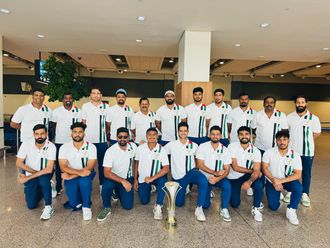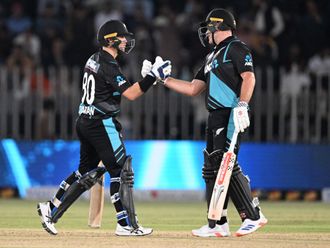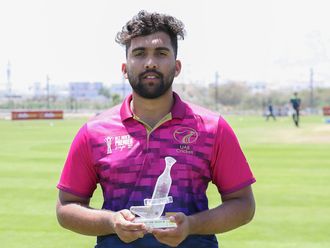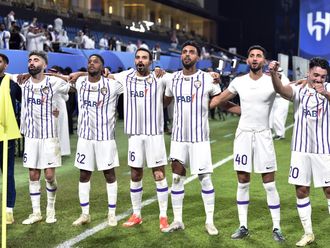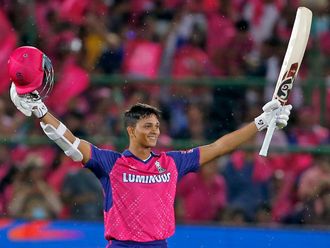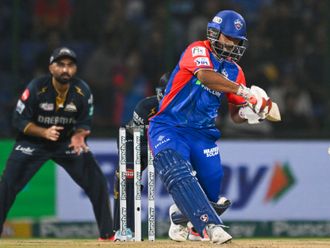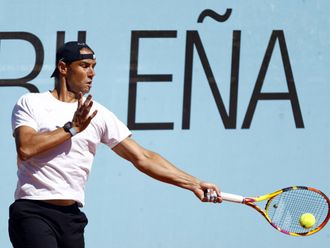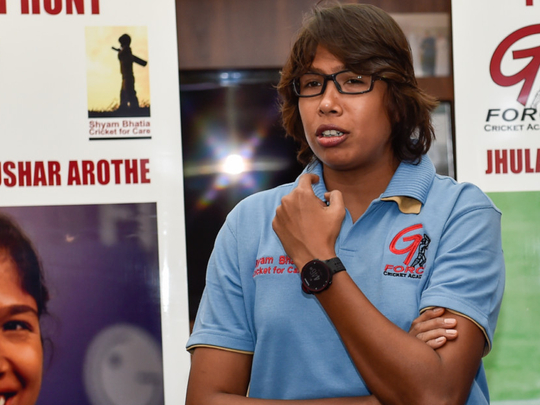
Dubai: Jhulan Goswami hails from Chakdaha, a small village 68 kilometres from Kolkata. With dreams and determination, she battled her way to become the world’s highest wicket-taker in One Day International (ODI) cricket.
Speaking to Gulf News after the launch of the G Force Cricket Academy clinic at the Shyam Bhatia cricket museum, she talked about her journey that has made her a role model for women cricketers around the world.
Often pausing in between the talk to recall her days of hardship, her voice revealed how determined she was in pursuit of her dreams and the hard work she put in.
“I come from a small village called Chakdaha and used to travel nearly 120 to 125 kms to get training in Kolkata,” she said.
“No one from my family has ever played any sport. Most people in my village watch only football and the only sport I used to get to watch on television was the East Bengal versus Mohun Bagan (domestic football) match. I fell in love with sports when in the 1990 Fifa World Cup final Argentina lost to West Germany. My entire neighbourhood was crying for Argentina. That day had a huge impact on me and from there on I started watching sports. During those days I used to follow my cousin playing backyard cricket, and I was their ball girl. And when they finished playing, I would go and try to copy their style of playing. In 1992 I saw the Benson & Hedges World Cup final. That was the first time I saw a televised cricket match. From then on I started playing cricket. My friends too started discussing only cricket.”
Goswami began by playing tennis ball cricket. “To buy a leather ball was expensive, and none of us in the village could afford to buy a proper equipment,” she said, adding that early everyone discouraged her when she decided to become a cricketer.
“Women’s cricket had no history when I took up the sport. Coming from a middle-class family the primary thing to do was concentrate on education. They believed that only education will help us get a good job, and then one must get married. So when I told my family I planned to play cricket, they completely opposed the idea.
“In 1997 I saw the Women’s World Cup final live between Australia and New Zealand in Kolkata. That was the first time I saw a women’s match and it had a huge impact on me. That day I felt that if I took up this sport, one day I might be able to play for India.”
Goswami then went on to relate incidents that occurred while chasing her dream.
“I used to study while travelling by train and even sleep there since I spent most of my time travelling,” she said. “That affected my studies since I used to get exhausted after the training and travel. But my school was kind enough to give me grace marks, accepting my dream to become a cricketer. I will never forget my school’s support.”
There have been instances when people in the train would pass negative comments on her.
“While travelling some people would say that girls should be sitting at home and studying and then get married, and not be playing a sport,” she recalled. “Some even warned me that if I got hurt by a ball no one would then marry me. But I was determined about my passion and mentally focused. So these comments never bothered me.”
Then, as if giving advice, she said: “In life, it is important to keep away from negative people. I am a positive girl and passionate about cricket. Whenever people talk negative, I move away from them. I did not want them to divert my thought because I knew I was trying to do something blindly without knowing what the future held for me; I knew choosing cricket was like gambling.”
Did Goswami ever dream of becoming the highest wicket-taker? “When I played my first match for India, I only wanted to get at least one wicket so that I could tell everybody that I had got a wicket in the one match I played for my country, and that I had put in a lot of effort to reach there. But after that my dreams changed with every match. When I neared the highest wicket landmark, it put a lot of pressure on me. For two to three ODI series, I went wicketless. Then I concentrated on my basics telling myself to forget everything and focus only on my bowling, and that if I was destined I will become the highest wicket taker.”
A Bollywood movie is now being made chronicling Goswami’s career.
“In the last two to three years, I have been getting offers to make a movie,” she said. “But I rejected the idea since Indian women’s cricket was not doing well. Cricket is a team sport and I did not want to see only myself doing well while doing a movie on me. Now that the Indian team has produced good results, people watching the movie will also feel good. The director was also saying that if a movie is made on me then many other young girls will be motivated to play this sport, and I feel it can happen.”
Goswami also talked about her relationship with captain Mithali Raj.
“We have been playing together for the past 15 years,” she said. “She played for India when I was playing Under-19 and I used to look up to her. When I was in the Indian team she was made vice-captain and we all looked up to her for her consistency and on how to play fearless cricket.”
Goswami also revealed how she got her nickname ‘Gozzy’. “Australia’s Lisa Catley found it very hard to pronounce my name Goswami. So she started calling me Gossy, saying my name was similar to an Australian name Gosgo; that is how I got that nickname.”
What else does Goswami want to achieve? “I played two World Cup finals, but was not able to touch the World Cup,” she said. “In the future I want to see India win the World Cup.”


